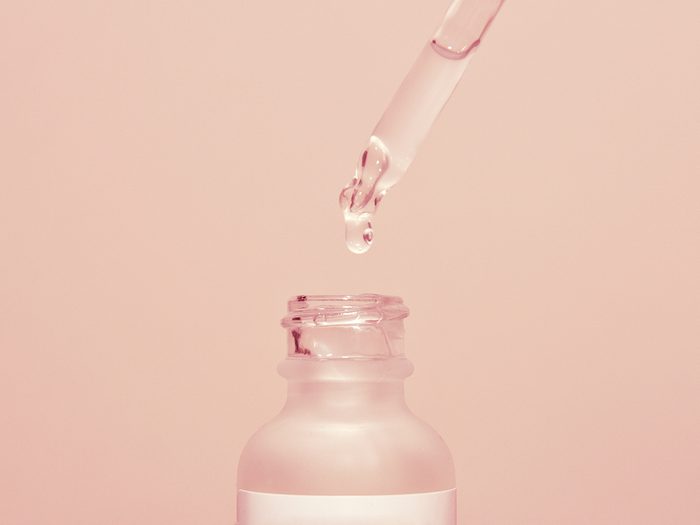What to Know About Azelaic Acid, the New Buzzy Acne-Crushing Ingredient

Azelaic acid is a trendy ingredient featured in an array of new products from popular skin care brands. But what does it do? And should you try it? Here's what a dermatologist has to say...
Whether you’re fighting acne, hoping to give your complexion a glow or looking to even out your skin tone, you’ve probably tried or considered using trendy ingredients like vitamin C, retinol, glycolic acid and salicylic acid. All ingredients have their ideal uses (and work differently for different skin types), but can be harder to navigate because of their strong effects on the skin. Enter: Azelaic acid, an under-the-radar ingredient that’s well-tolerated by even the most sensitive skin and has a wide range of uses.
While the ingredient has been around for a while, it’s now making its way into more and more products on store shelves—with many brands adding the ingredient to new formulas.
We spoke with Monica Li, a Vancouver-based dermatologist and clinical instructor at the department of dermatology and skin science at the University of British Columbia, about azelaic acid to determine if it’s worth adding to our skin care routine.
What is azelaic acid?
“Azelaic acid is a naturally occuring form of dicarboxylic acid—it’s something that is naturally produced on our skin,” explains Li. It’s produced by a healthy? yeast that lives on our skin called malassezia furfur and has anti-inflammatory and antibacterial properties.
What are the benefits of azelaic acid?
While your skin naturally makes azelaic acid, giving your skin more of it via skin care products can help you take greater advantage of its benefits. “At its prescription-level potency, it’s mostly used to treat acne and rosacea,” says Li. Because of its antibacterial properties, it can kill the bacteria on your skin that causes acne. And its anti-inflammatory properties help soothe rosacea, which often causes redness, swelling and acne-like breakouts.
Azelaic acid also has exfoliating properties. But, it differs from other acids like AHAs and BHAs because it’s gentle, so you avoid the dryness, redness and irritation that can come from harsher exfoliants. “It has a bit of what we call a keratolytic property, meaning it can unclog some of the debris that clogs up pores,” says Li.
The ingredient also works as a skin brightener and for managing hyperpigmentation because it inhibits something called tyrosine, which is an enzyme on our skin that produces pigment, says Li. “And because [azelaic acid] inhibits it, it can treat unwanted pigmentation on the skin and even skin tone.”
But its gentleness is its biggest draw, making it safe for people who normally wouldn’t be able to use comparable products. Li points to pregnant people or people who are breastfeeding as an example. Typically, pregnant people are told to cut retinol out of their skin care routine. But, “azelaic acid is safe in pregnancy, and it’s an option to explore if someone is dealing with pigmentation or acne when pregnant,” says Li.
How do I use azelaic acid?
As with all new skin care products, patch test on the back of your wrist or behind the ears a few days before applying to your face to make sure it doesn’t cause irritation, itchiness or other problems.
Then, start slow. While the ingredient can be used up to twice a day, morning and night, Li recommends introducing it to your skin care routine slowly, using it once a day, three times a week. Azelaic acid is considered gentle, but it’s still an exfoliant and it can take your skin time to get used to it. From there, you can gradually increase frequency if your skin is tolerating the ingredient well, meaning that your skin isn’t red, itchy or experiencing a burning sensation when you use it. If you don’t see results immediately, Li says that’s normal. It’s a very gentle ingredient so it’ll take at least six to eight weeks of consistent use to see effects.
Apply azelaic acid onto clean, dry skin as the first step of your skin care routine, before other serums. And Li reminds users to follow it with a moisturizer to “improve the tolerability of the product.” And, of course, don’t forget to protect your skin with a sunscreen with an SPF of at least 30.
Where can I find azelaic acid?
Just like any other skin care ingredient, azelaic acid is typically found in serums, creams and gels. It’s not as ubiquitous (yet!) but there are a few products in Canada that contain azelaic acid, all coming in different forms.
First, there are the prescription-level gels that derms can provide—the strongest potency in Canada being 15 percent, which is stronger than over-the-counter products and are for those using it as an acne or rosacea treatment, says Li. As for over-the-counter options, Drunk Elephant recently launched their Bouncy Brightfacial in Canada, a leave-on mask meant to clarify skin tone and fade spots that contains 10 percent azelaic acid. Paula’s Choice is has a 10 percent Azelaic Acid Booster. And, there’s SkinCeuticals’s Phyto A+ Brightening Treatment moisturizer, which includes a less potent dose with just 3 percent.
Is there anyone who shouldn’t use azelaic acid?
Of course, you should stay away from azelaic acid if you have an allergic reaction or a hypersensitivity to the ingredient, says Li. Or, if you’re someone who has severe cystic acne, “it’s unlikely that azelaic acid is going to do much. You’d need to talk to a doctor and get prescriptions that aren’t just topical.”
For those with sensitive skin or pigmented skin, Li advises caution when using azelaic acid because it could cause inflammation and post-inflammatory pigmentation. “The irritation causing skin inflammation stimulates melanocytes – cells that can produce excess pigment on the skin surface – and in more richly pigmented individuals, or anyone who isn’t fair skinned, these melanocytes are more easily activated,” she says. “I wouldn’t say you can’t use it, but be careful.”




